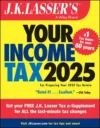Your Address and AMT
Where you live is a big factor in determining the amount of alternative minimum tax (AMT) you may owe. Generally, taxpayers living in states with high income taxes are more likely to be subject to the AMT.
The Congressional Research Service has released a report showing the AMT burden by state for 2005 and 2006, and the projected burden for 2008 if Congress fails to create AMT relief this year.
In 2005, 4.07 million taxpayers nationwide paid the AMT. This represents 3.01% of all returns filed. The states with the greatest percentages of taxpayers subject to the AMT were: New Jersey, New York, Connecticut, the District of Columbia, and Maryland. In New Jersey, for example, which had the highest percentage—6.81% of all returns reported AMT. The states with the lowest percentages were: South Dakota, Mississippi, Tennessee, Alaska, and Alabama.
In 2006, 4.12 million taxpayers nationwide paid the AMT. This represents nearly 2.96% of all returns filed. The states with the greatest percentages of taxpayers subject to the AMT were the same as in 2005: New Jersey, New York, Connecticut, the District of Columbia, and Maryland. The states with the lowest percentages were: South Dakota, Mississippi, Tennessee, Alaska, and North Dakota.
In 2008, the AMT exemption amounts that had been temporarily increased for 2005, 2006, and 2007, are set to revert to prior levels. To date, Congress has failed to enact comprehensive AMT reform or to create a "patch" (a temporary fix) for 2008. The Joint Committee on Taxation predicts that 25.7 million taxpayers will be impacted by the AMT (the Brookings Institute estimates the number at 26.8 million taxpayers).
Source: Congressional Research Service RS22083, 7/15/08
Private letter ruling
A written determination issued to a taxpayer by the IRS that interprets and applies the tax laws to the taxpayer’s specific set of facts. A letter ruling advises the taxpayer regarding the tax treatment that can be expected from the IRS in the circumstances specified by the ruling. It may not be used or cited as precedent by another taxpayer.



